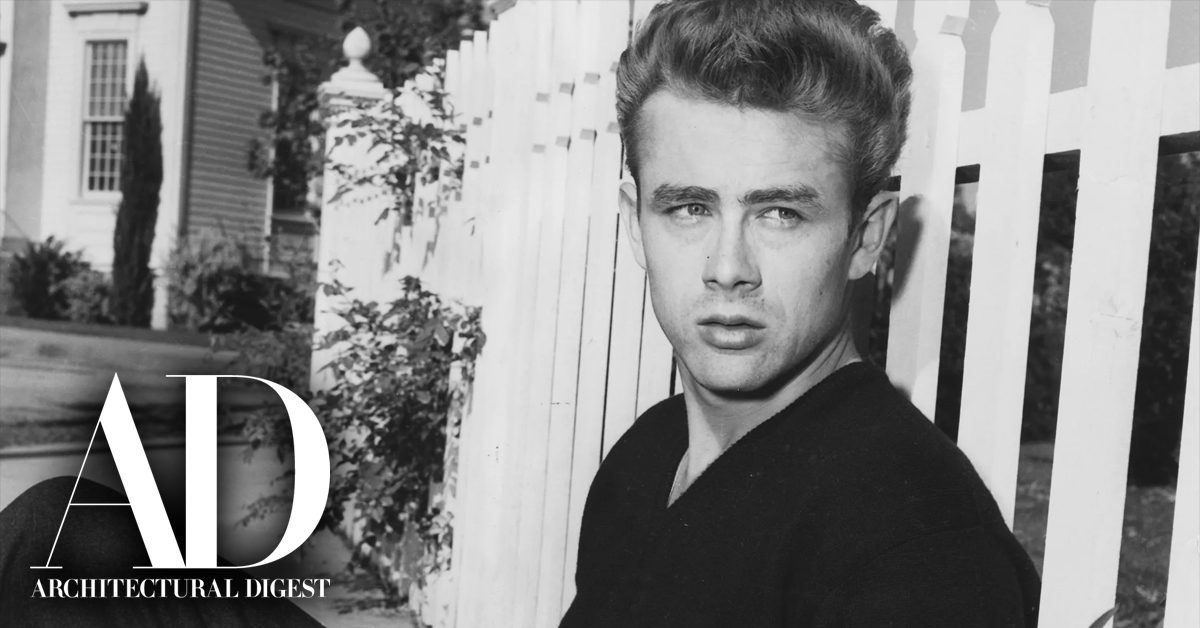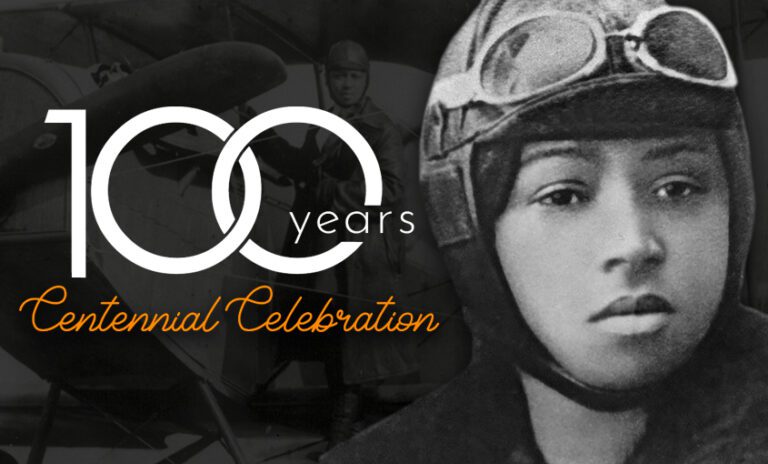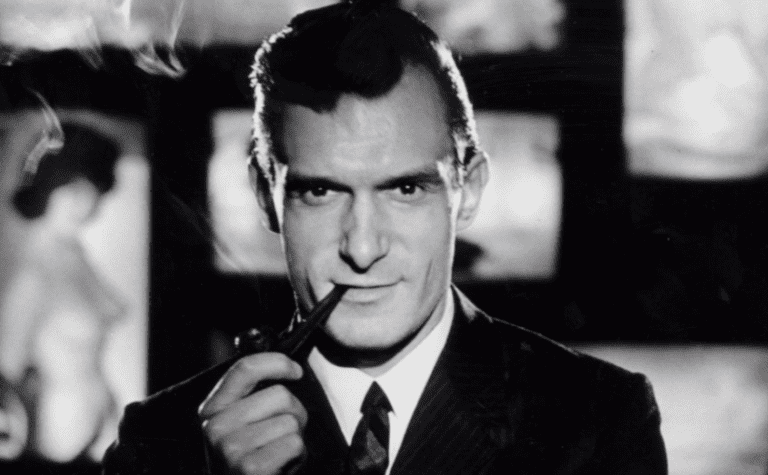The icon was a young Indiana farmer, a New York City slicker, and a Hollywood resident in his 24 years
James Dean’s effortless, devil-may-care brand of cool defined the affect and aesthetic of youth rebellion in the 1950s, and for generations thereafter. The East of Eden star’s affinity for auto racing and casual chic dressing played further into his bad boy image, and given his undeniable style and swagger, it’s easy to understand how lining one’s bedroom with posters and cutouts of Dean manifested as an interior design style in and of itself for the throngs of teenagers who adored him.
The Rebel Without a Cause actor’s tragic death at the age of 24 came only a few years into his incredibly promising Hollywood career, but Dean’s legacy lives on. Read on for a look into the properties of the American icon’s life.
Childhood in Marion and Fairmount, Indiana
Dean was born in February of 1931 at Seven Gables, a four-unit apartment house in Marion, Indiana. The two-story building at 4th and McClure streets was demolished in 1975. In its place stands a monument emblazoned with a depiction of the actor as well as the image of his birthplace and first home.
His father packed up the family and left both Indiana and his work as a farmer behind to become a dental technician in Santa Monica, California. They stayed for a few years in a ranch-style rental on 23rd Street, but after the 1938 death of Dean’s mother, the boy was sent back to Indiana to live with his aunt and uncle, the Winslows, on their farm in the town of Fairmount.
The 1904-built Winslow farmhouse, situated on 300 sprawling acres, was home to Dean throughout his adolescence and teenage years. “We had a pond. We’ve still got it here behind the barn. Of course back when Jimmy was here, there wasn’t stuff for people to do like there is today,” Dean’s cousin Marcus Winslow Jr. told the Indianapolis Star in 2019. “He used to skate all the time. I remember on the weekends, 8 or 10 cars parked here in the barnyard with kids skating.”
“Although he knew who his dad was and so forth, I think he considered this his home,” Winslow said. After the death of Dean’s father in 1995, most of the late actor’s belongings were left to Winslow. The majority of his things have been donated to the local Fairmount museum. Dean was laid to rest in Fairmount’s Park Cemetery.
Santa Monica, California
After graduating from high school in 1949, Dean moved back out West to live with his father and stepmother and started at Santa Monica College, majoring in pre-law. He later transferred to UCLA and changed his major to drama. It’s said that he bounced around from place to place in Southern California during his time as a student, boarding at the Sigma Nu fraternity house and rentals with friends for short stints before he dropped out to pursue his acting career full-time in 1951.
New York
Dean was a rehearsal assistant testing stunts for the game show Beat the Clock while he worked to launch his career as an actor in the Big Apple. Living in Manhattan was a bit of an adjustment for the young aspiring star. “At first New York overwhelmed me,” Dean once said, per an April 1996 AD story. “I was so confused that I strayed only a couple of blocks from my hotel off Times Square, to go to the movies.” He spent several years in the early ’50s floating between Midtown rentals until he moved into an Upper West Side apartment building.
The actor’s fifth-floor walkup unit at 19 West 68th Street had room enough for only a daybed, a built-in desk, and a hot plate. Photos of Dean lounging in the cozy, modest residence show a wall lined with bookshelves and a single porthole window. The dwelling reportedly had no kitchen.
Return to California
Dean left New York for California in the spring of 1954 after being cast in as Caleb Trask in Elia Kazan’s East of Eden. The Little River Inn in coastal Northern California claims he stayed in their Ocean View deluxe suite during production. He also lived in the guest quarters of a circa 1927 Spanish-style Hollywood Hills abode for a year or two, around when he was cast in Rebel Without a Cause.
The actor—who was also an aspiring race car driver, with dreams of competing in the Indy 500—died tragically in a car crash along Southern California’s US Route 466 before he could put down firmer roots anywhere. His early death is an outsized part of the storytelling around Dean, with many lamenting the larger-than-life career that could have been, but the legacy he built in several short years to cement himself as a generational talent suggests he had little left to prove.




